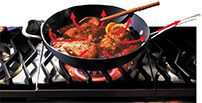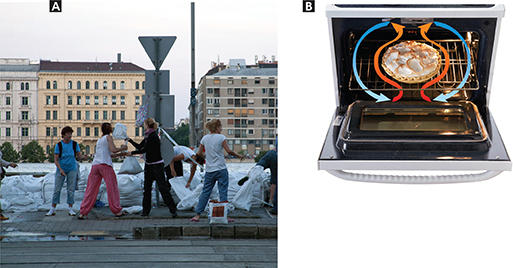
Figure 6 The arrows show how thermal energy is conducted away from the heat source in a metal frying pan. Predicting Would it be safe to touch the handle of the wooden spoon?

Figure 7 Convection is the transfer of thermal energy by the movement of particles in a fluid.
A Passing sandbags along a line is like transferring thermal energy by convection.
B The arrows show convection of air in an oven.
Predicting Which part of the oven should have the highest temperature?
Thermal Conductors
Figure 6 shows a frying pan on a hot stove. The bottom of the pan heats up first. The metal handle heats up last. You can see that the flames do not directly heat the handle. The handle heats up because the metal is a good thermal conductor.
A thermal conductor is a material that conducts thermal energy well. A wire rack in a hot oven can burn you because the metal conducts thermal energy so quickly. Pots and pans often are made of copper or aluminum because these are good conductors.
A thermal conductor doesn't have to be hot. Why does a tile floor feel colder than a wooden floor? Both floors are at room temperature. But the tile feels colder because it is a better conductor and transfers thermal energy rapidly away from your skin.
Thermal Insulators
Why is it safe to pick up the wooden spoon shown in Figure 6? Wood heats up slowly because it is a poor conductor of thermal energy. A material that conducts thermal energy poorly is called a thermal insulator.
Air is a very good insulator. A double-pane window has an air space contained between two panes of glass. The air slows down conduction to reduce heat loss in winter and to keep heat out of a building in summer. More expensive windows use argon gas, which is an even better insulator than air. Wool garments and plastic foam cups are two more examples of insulators that use trapped air to slow down conduction.
Convection
Convection is the transfer of thermal energy when particles of a fluid move from one place to another. Look at the people building a wall with sandbags in Figure 7A. The moving sandbags are like the particles in a fluid. The wall grows taller as more and more sandbags arrive. In much the same way, particles in a fluid can transfer thermal energy from a hot area to a cold area.




